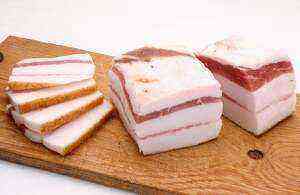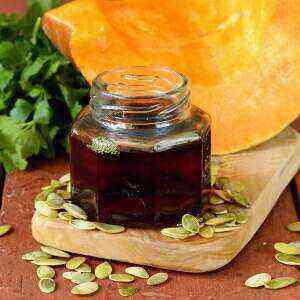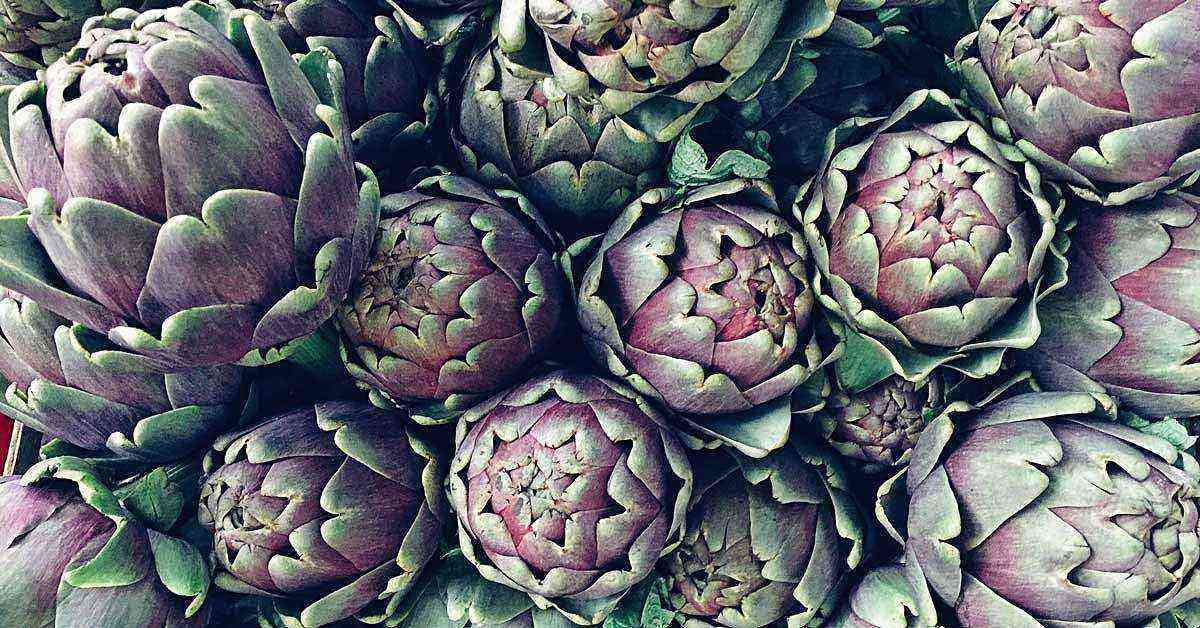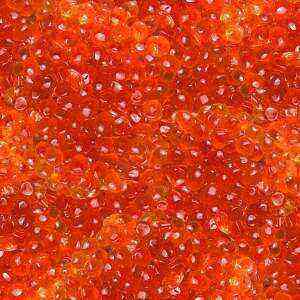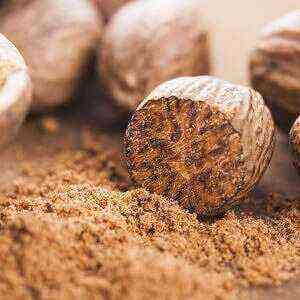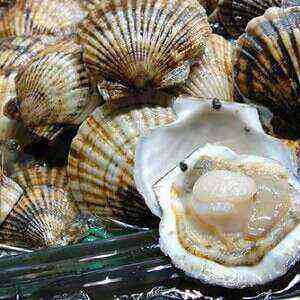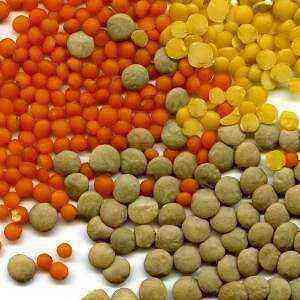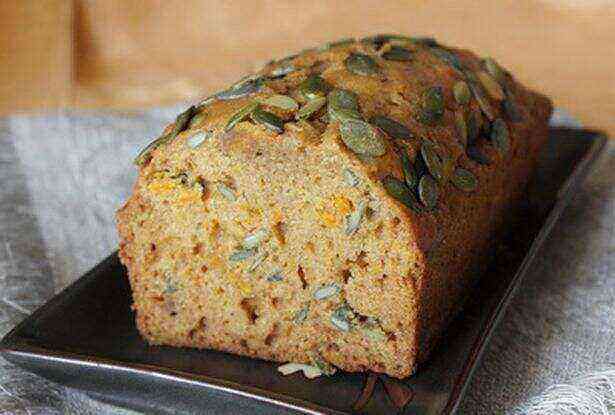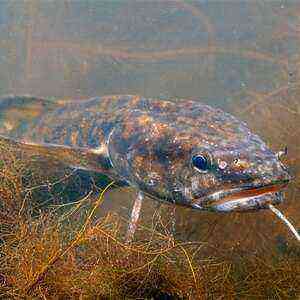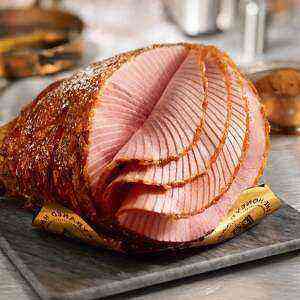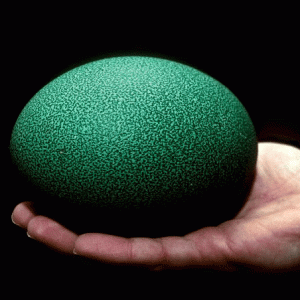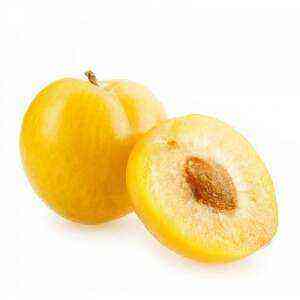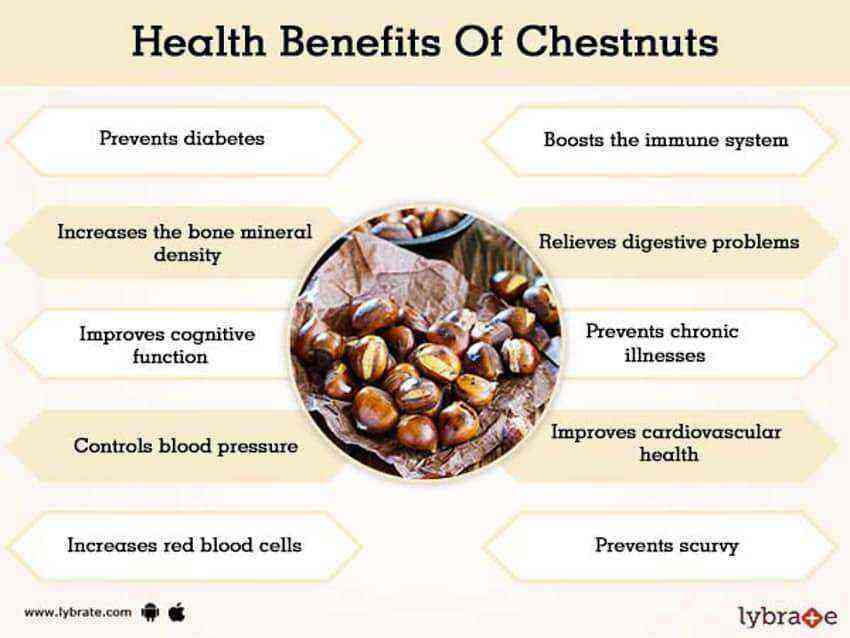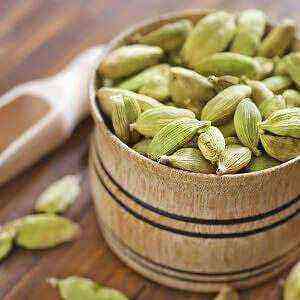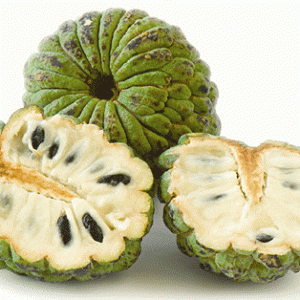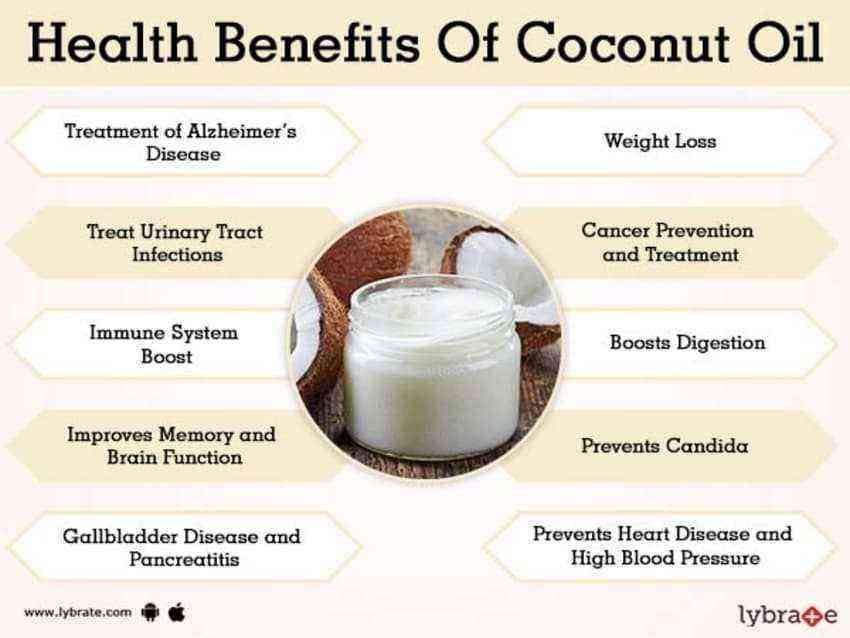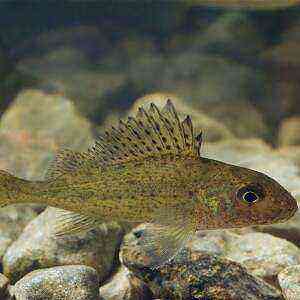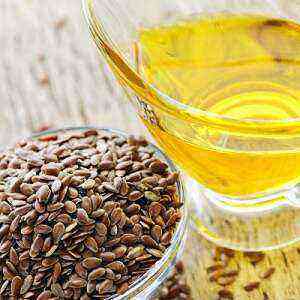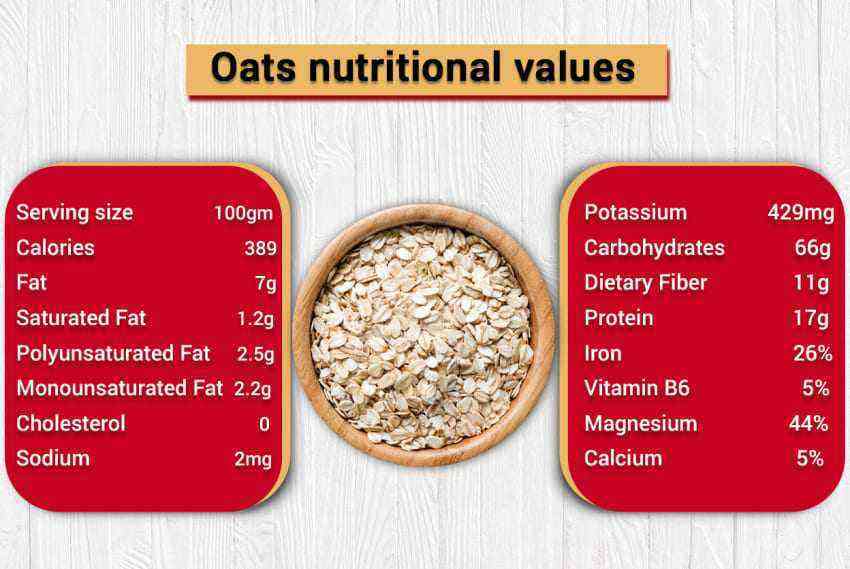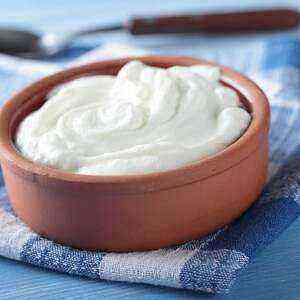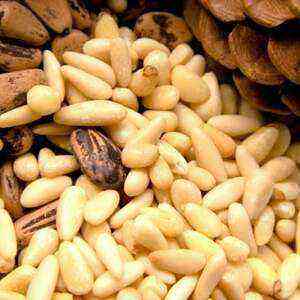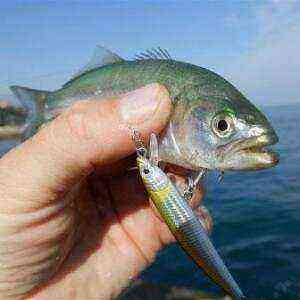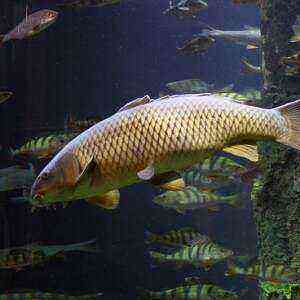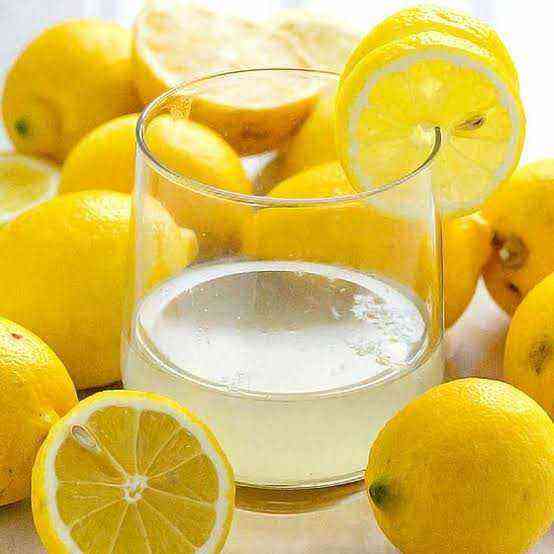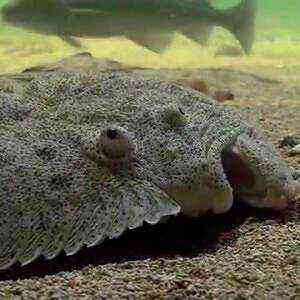
Halibut live in the cold waters of the Atlantic and Pacific Oceans, in the Barents, Bering, Okhotsk and Sea of Japan. Most of the time these fish spend at a depth. They feed mainly on crustaceans, mollusks, cod, mackerel, herring, pollock, and gerbils. Halibut live up to 30 years, reproduce offspring begin in 7-10 years.
Interesting Facts
Halibut fry appear as common fish. In the process of their growth and development, the body of the fry is modified in a special way: the fish “lays down” on the left side, while its eyes and mouth are shifted to the right.
Halibut is sometimes mistakenly called a maritime language. However, the sole, or fish-salt, has a fundamental difference from the halibut and lies in the fact that the sole is its right-sided relative. In simple terms, the sole “lies” on the right side.
Halibut caviar consists of small beige eggs. Unscrupulous producers can repaint the eggs of this fish black and sell under the guise of caviar of sturgeon.
Overview
The halibut has a flat body with a length to width ratio of 3: 1. His eyes are placed on the right side of his torso, and his left side is his abdomen. The fish’s mouth is large, located under the eyes. The back color ranges from olive to dark brown, the belly is silver.
There are three kinds of halibut, which include five species of these fish:
- White halibut (Atlantic and Pacific species).
- Black (blue) halibut.
- Arboric halibut (Asian and American species).
The size and weight of these fish differs depending on their species. Small representatives of halibut, which are usually represented on fish shelves, have a length of 30-50 cm and weight up to 3 kg.
The largest representative of these fish is the Atlantic halibut, which can reach 4,5-5 m in length and have a weight of up to 340 kg. But his fishing is forbidden, since he is listed in the European Red Book.
Black halibut has medium size: it reaches the length of 1-1,2 m and weight 40-45 kg.

- Asian – reaches a length of 70 cm and weighs up to 3 kg;
- American – has a length of 45-85 cm and a weight of 2,5-3 kg.
Fish spawning depends on their habitat and usually occurs in winter or spring, when the water temperature does not exceed + 10 ° С. Halibut spawn at a depth of about 1 km. The female can throw up to 3 millions of eggs. Fry appear after 14-17 days at a water temperature no higher than + 6 ° С.
Chemical composition
Halibut is a fish of northern waters, so its meat contains a lot of fat. The nutritional value of its meat depends on its habitat: the farther north this fish lives, the more fat it contains.
The calorie content of halibut depends on the fat content in it and ranges from 102 to 190 kcal per 100 g. Halibut caviar consists of 75% protein and 25% fat. The calorie content of caviar is 107 kcal per 100 g.
Most of the fats are polyunsaturated omega-3 fatty acids. These fatty acids are essential for humans because they are not synthesized in the body. It should be noted that in the process of harvesting and culinary processing of this fish, part of the fat is lost. For example, when halibut is frozen, up to 50% of healthy fats are lost, and when salted, up to 30% is lost.
In halibut meat there are almost all the vitamins and vitamin-like substances that a person needs. It contains many fat-soluble vitamins (A, D, E). The liver and caviar of this northern fish are especially rich in them.
Vitamin content
Name
Content in 100 g raw fish, milligrams
Vitamin A (retinol) 0,1 Vitamin B1 (thiamine) 0,05 Vitamin B2 (riboflavin) 0,11 Vitamin B5 (pantothenic acid) 0,34 Vitamin B6 (pyridoxine) 0,55 Vitamin B9 (folic acid) 0,012 Vitamin PP (nicotinic acid) 6,5 Vitamin C (ascorbic acid) 0,2 Vitamin D (calciferol) 0,005 Vitamin E (tocopherol) 0,61
Given that the daily requirement for vitamin D in an adult is 5-10 mcg, then in order to get a daily dose of this vitamin, you need to eat only 100 g of halibut.
Living halibut in salty oceanic and marine waters determines the mineral composition of its meat.
Minerals
Name
Content in 100 g raw fish, milligrams
Калий
435,0
Фосфор
236,0
Натрий
68,0
Кальций
7,0
Магний
23,0
Железо
0,16
Медь
0,023
Марганец
0,011
Цинк
0,36
Селен
0,046
Йод
0,2
The high content of protein, omega-3 fatty acids, vitamins, micro- and macroelements in meat, liver and caviar of halibut makes it a very useful, but fatty product.
Useful Properties

- increases the elasticity of the vascular walls;
- has a cholesterol effect;
- reduces the level of homocysteine in the blood – a product of protein metabolism that has a damaging effect on the walls of blood vessels;
- lowers blood pressure;
- reduces blood viscosity, which prevents the formation of pathological blood clots in the vessels;
- improves the conductivity of nerve impulses;
- improves microcirculation, including in the brain;
- stimulates the breakdown of saturated (“harmful”) fats;
- suppresses the release of stress hormones;
- increases the synthesis of serotonin – the “hormone of joy”;
- promotes the synthesis of anti-inflammatory substances in the human body – prostaglandins;
- normalizes the metabolism of fats in the body;
- improves the deposition of calcium salts in bones and tooth enamel;
- has pronounced antioxidant properties;
- has an antitumor effect;
- increases the body’s defenses;
- It stimulates blood formation;
- improves vision;
- slows down dystrophic changes in the eye;
- helps to restore the menstrual cycle in women;
- improves the quality characteristics of sperm in men;
- has a hepatoprotective effect;
- promotes detoxification of the body;
- slows the aging process;
- normalizes the thyroid gland.

- arrhythmias;
- atherosclerosis;
- arterial hypertension;
- thrombophilia (propensity for pathological thrombosis);
- varicose veins;
- thrombophlebitis;
- anemia;
- inflammatory diseases during the period of heat and recovery;
- Alzheimer’s disease;
- rheumatoid arthritis;
- eye diseases;
- hypothyroidism;
- rachitis;
- osteoporosis;
- cirrhosis of the liver;
- menstrual disorders;
- male infertility;
- oncological pathologies;
- depression;
- frequent stress;
- deficiency of vitamins and minerals.
When eating halibut in food should always consider the method of cooking dishes from it.
Many types of cooking, such as smoking or frying, significantly reduce the amount of nutrients in the fish, while increasing its calorie content. In such conditions, the meaning of introducing dishes from halibut to the menu with a medical purpose is lost.
Possible harm

- children up to 7 years;
- pregnancy;
- lactation;
- obesity;
- allergic reactions to sea fish or seafood;
- idiosyncrasy;
- increased thyroid function (iodine increases the synthesis of thyroid hormones);
- concrements (stones) in the biliary tract and / or kidneys;
- hypercalcemia (increased calcium in the blood).
Halibut refers to fish whose meat has an average mercury content. This means that eating this fish should be treated with great care. According to the recommendations of the Canadian Ministry of Health, halibut can be eaten no more than 4 once a month, while the portion should not exceed 170 g.
External application
For the first time, the fat of this fish as an external skin softener was used at the end of the 60 of the last century by a pharmacist Ella Bashe. It was from the fat of the halibut that the woman created an ointment for her husband, who worked in a harsh northern climate. The result of the experiment was amazing: after applying the ointment, the skin became soft, supple and smooth.
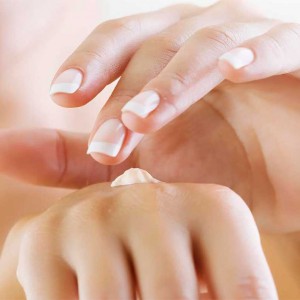
Vitamins and omega-3 fatty acids of fat halibut have many beneficial effects on the skin:
- promote healing of abrasions, cuts, burns;
- stimulate the production of collagen and elastin in the skin;
- soften the skin;
- remove local irritation on the skin;
- reduce inflammation.
On the basis of the fat of this fish, creams and ointments are created, which are intended for external use when:
- propensity to form acne and acne;
- acne;
- skin allergies;
- chronic dermatitis;
- microtraumas and superficial burns on the skin;
- dry skin;
- decrease skin turgor (flabbiness);
With the prophylactic use of creams based on the fat of this northern fish, the skin for a long time remains elastic and smooth, its aging is suspended.
How to choose and store
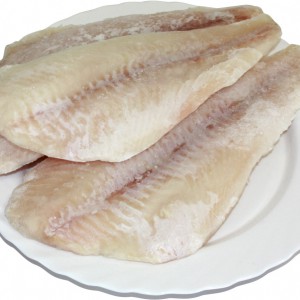
To buy a delicacy product, the buyer needs to be able to recognize it:
- Halibut fillet should be white. The pink shade of fish meat indicates a substitution.
- The thickness of the fillet can not be more than 1,5 cm, because it is flatfish.
- On the sides of the fillet should not be fatty layers. The fat is evenly distributed over the fillet of this fish.
- The price of halibut fillet in 3-4 is higher than the price of pangasius fillet. Therefore, before buying it, you should ask about the prices for pangasius fillets.
You do not need to buy frozen fillets, if it is covered with a thick layer of ice glaze:
- under it is impossible to consider the color of the fillet;
- chances are that the fish has been repeatedly thawed and frozen;
- after defrosting the fish will lose much weight.

- name of the frozen product;
- the percentage of glaze in the product (the buyer must pay only the weight of the fish itself, and not the glaze);
- manufacturer and his contacts;
- the supplier and his contacts;
- freezing method;
- production time and storage conditions;
- certification information.
The shelf life of frozen halibut fillets is 8 months at -18 ° C.
Defrost (defrost) frozen fillets need to slowly. It is better to do in the refrigerator. After defrosting the fish is not subject to storage, therefore it is necessary to prepare dishes from it immediately after defrosting. Repeated freezing is not allowed!
How to cook
Halibut is cooked in different ways. It is salted, smoked, canned, baked, fried, stewed, boiled, cooked on a grill. Halibut caviar is salted and used as a separate snack.
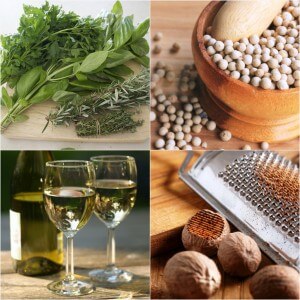
Halibut is self-sufficient in itself, so it does not require special spices, marinades and sauces. It is best combined with:
- spicy herbs (rosemary, sage, thyme, basil);
- white or pink pepper;
- lemon or white wine;
- soy sauce;
- nutmeg;
- capers;
- greens (parsley, dill);
- vegetables.
Fillets of this fish can be used to prepare a delicious restaurant-level dish – halibut in white wine. To prepare it, you need to take: 0,5 kg fillet, 2 small carrots, 1 zucchini, soy sauce, 1/4 lemon juice, a sprig of rosemary, nutmeg, salt and pepper to taste. Wash the fillet, dry it, grate it with a mixture of salt, pepper and ground nutmeg, put it on foil, put a sprig of rosemary on top of the fillet and bake at 170 ° C for half an hour. At this time, cut the vegetables into strips, sauté them separately in vegetable oil, put them in a colander, and then on a paper towel to remove excess fat. Put the vegetables on the edge of the dish, sprinkle with a mixture of aromatic olive oil and soy sauce. Place the baked fish in the center of the dish. If the fish is very fatty, you can serve lemon wedges with the dish.
Conclusion
Halibut is a useful commercial fish. The composition of the meat makes it possible to include this fish in the diet for many diseases. Omega-3 fatty acids contained in halibut have a beneficial effect on the cardiovascular system, metabolism, and the reproductive system of women and men. A high iodine content is indispensable in case of insufficient thyroid function.
Halibut fat has found its use in cosmetic and dermatological products for age-related skin changes, allergies, inflammation, wounds and burns on the skin.
However, for all its usefulness to use this fish is in moderate quantities, because it refers to fish with an average mercury content. For the same reason, its use should be abandoned to children up to 7 years, pregnant women and nursing mothers.
When cooking dishes from this inhabitant of the northern seas, one should remember that some methods of processing fish lead to a significant destruction of nutrients in it.
Food should be tasty, but also healthy. With regard to halibut, the phrase would be very correct: “Everything is good if it is in moderation!”
